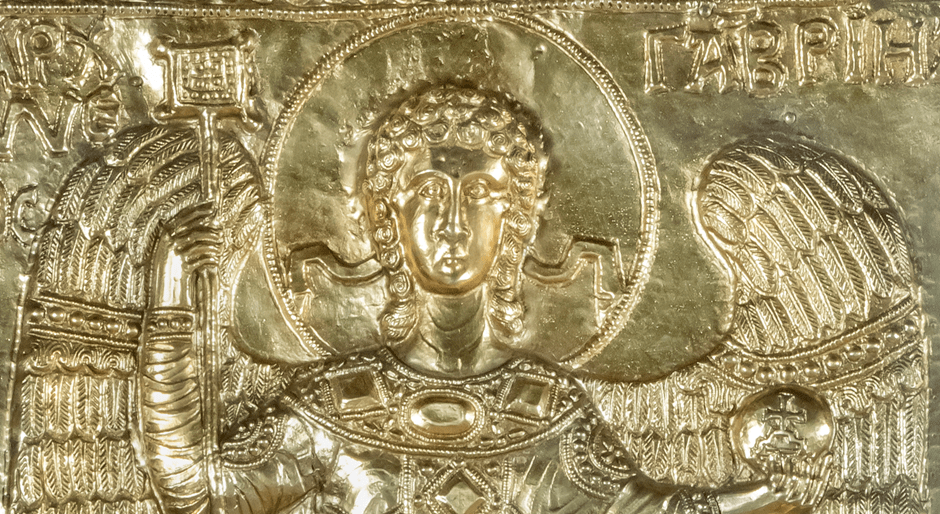Golden Glow: Gold and Silver Altarpieces in Venice and Beyond

(Photo: Caorle, Santo Stefano. Golden Altarpiece, detail. Photo by Domenico Ventura)
Between the 12th and the 17th centuries, the churches of Venice gleamed with the brilliance of gold and silver altarpieces and frontals. Radiating from dim interiors, they provided a unique and awe-inspiring backdrop for the celebration of liturgy. Large-scale and materially sumptuous, these altarpieces—possibly inspired by the Pala d’Oro in the Basilica of San Marco—were ingenious and dramatic viewing machines. They could be opened and closed horizontally to reveal different layers of imagery. When closed, they were further screened behind purpose-made panel paintings (or pale feriali).
These multimedia ensembles exerted significant appeal among contemporaries. In Venice, they continued to play a vital role as intermediaries between architecture and ritual in later centuries, when they functioned as the fulcrum of radical architectural renovations. In addition, less costly specimens made of painted or gilded wood were also commissioned for the adornment of churches across the lagoon. Finally, outside of Venice, precious silver and gold-plated pale have also survived along the northern and eastern Adriatic coast, further demonstrating the popularity of these peculiar altar adornments throughout Venice’s colonial territories.
As visual palimpsests that could be opened and closed during liturgy, gold and silver pale hold unique potential to transform our understanding of Venetian sacred spaces, and to illuminate the performative nature of medieval and renaissance religious and artistic experiences. This bilingual workshop examines these opulent artifacts and their pale feriali within their architectural, liturgical, and acoustic settings and in conversation with comparable visual materials from other Mediterranean regions. In doing so, it seeks to demonstrate the relevance of these rich artifacts for our understanding of broader art-historical issues, including: the artistic geographies and visual identities of Venice’s colonial empire; the material agency of painted and metallic surfaces; the interactions between artistic and technological knowledge in medieval times; sacred spaces across the eastern and western Christian Mediterranean; and the transformations of architectural environments in Venice across the medieval–early modern divide.
The full program of the conference can be downloaded below. Please note that the registration is mandatory - click HERE to register.
Organized by GREEN – Bocconi University | Si ringrazia MUR- Prin 2022- Prot. 2022JRXA9L – Next Generation EU (CUP J53D23013290001).
-
FilePRIN 23-24 JANUARY 2025_FINAL.pdf (251.51 KB)